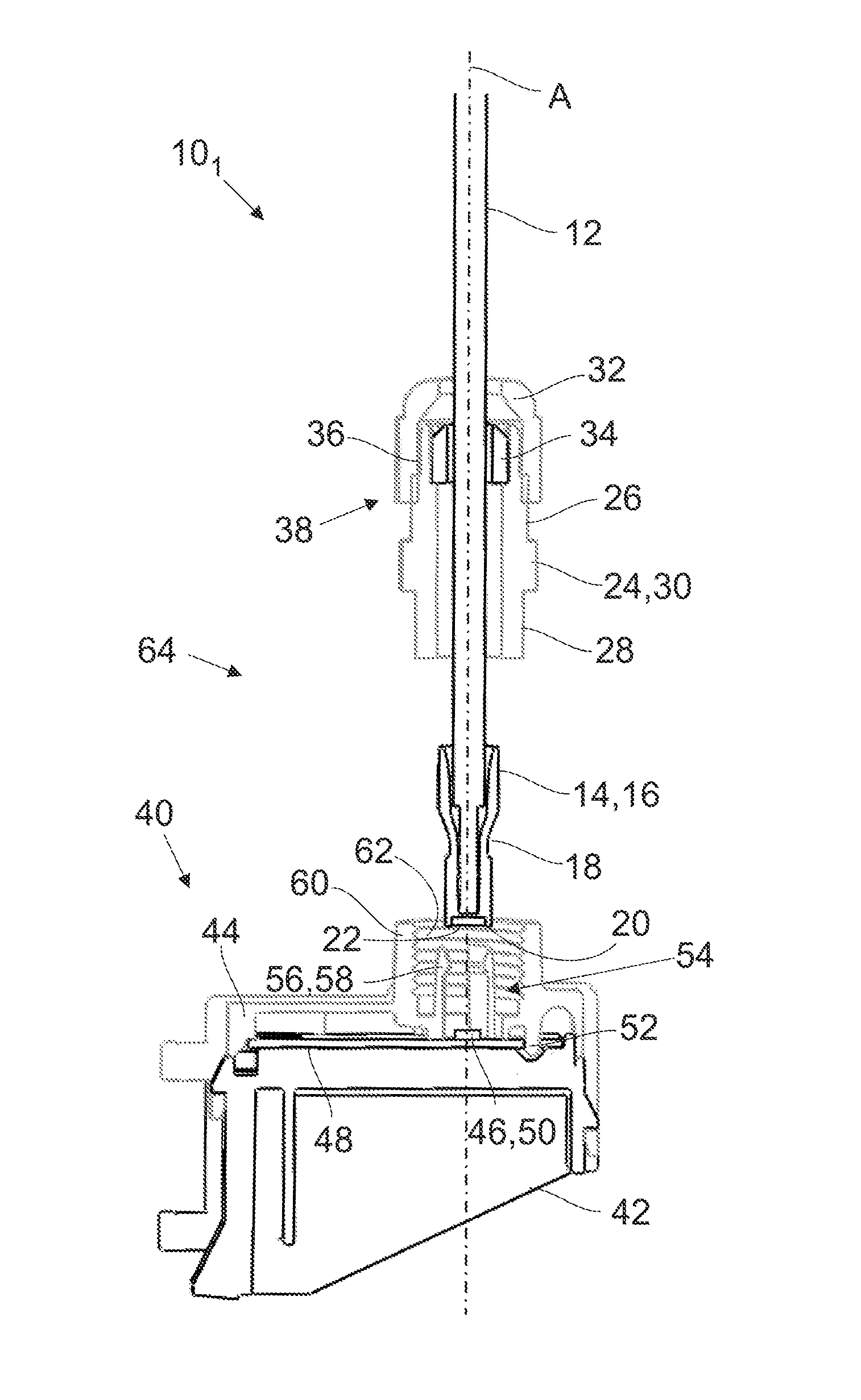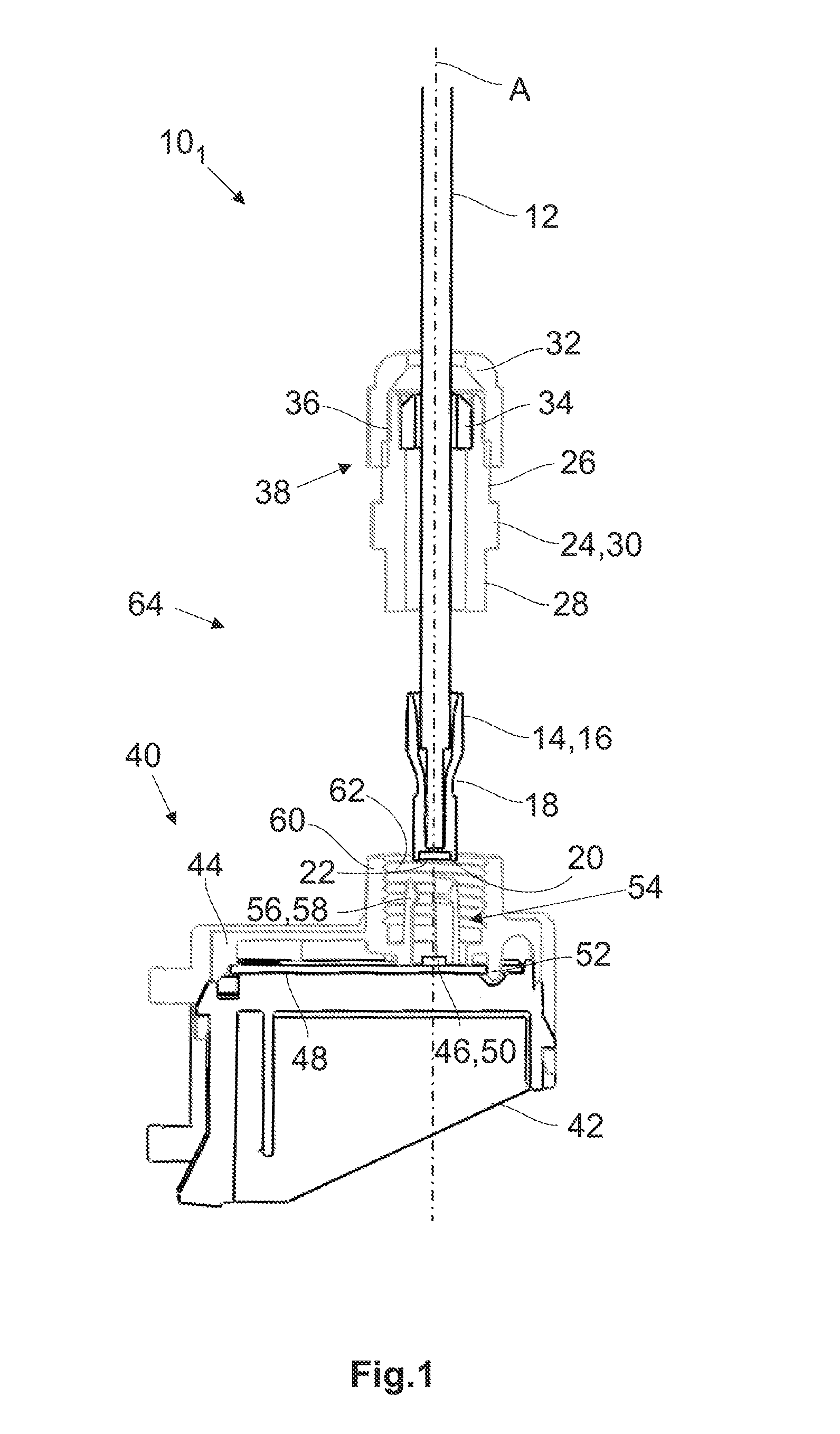Apparatus for connecting a fiber optic or rigid light guide to a light source
a fiber optic or rigid light guide technology, applied in the field of apparatus for connecting a fiber optic or rigid light guide to a light source, can solve the problems of ineffectiveness, inability to connect in particular at the outside, and a major challenge of fiber optic light guide to the light source in mass production, so as to prevent the delivery of defective components, reduce scrap, and simplify the effect of assembly
- Summary
- Abstract
- Description
- Claims
- Application Information
AI Technical Summary
Benefits of technology
Problems solved by technology
Method used
Image
Examples
Embodiment Construction
[0044]FIG. 1 shows a cross sectional view of a first exemplary embodiment of the system 101 according to the invention for connecting a fiber optic or rigid light guide to a light source in a disassembled state. The system 101 comprises a fiber optic light guide 12, which is connected to a fiber optic component not shown in detail. Instead of the fiber optic light guide 12 also a rigid light guide 12 may be used. At one end the fiber optic light guide 12 is connected to a ferrule 14, for example by gluing. The ferrule 14 is substantially configured tubular and comprises a contact surface 16 which in the illustrated example corresponds to the outer surface of the ferrule 14. A continuous, annular indentation 18 extends from the contact surface 16. Furthermore, the ferrule 14 comprises an end face 20 from which a recess 22 extends.
[0045]Around the fiber optic light guide 12 a fixing element 24 is displaceably arranged, which in the illustrated example is formed as a tubular sleeve com...
PUM
 Login to View More
Login to View More Abstract
Description
Claims
Application Information
 Login to View More
Login to View More - R&D
- Intellectual Property
- Life Sciences
- Materials
- Tech Scout
- Unparalleled Data Quality
- Higher Quality Content
- 60% Fewer Hallucinations
Browse by: Latest US Patents, China's latest patents, Technical Efficacy Thesaurus, Application Domain, Technology Topic, Popular Technical Reports.
© 2025 PatSnap. All rights reserved.Legal|Privacy policy|Modern Slavery Act Transparency Statement|Sitemap|About US| Contact US: help@patsnap.com



